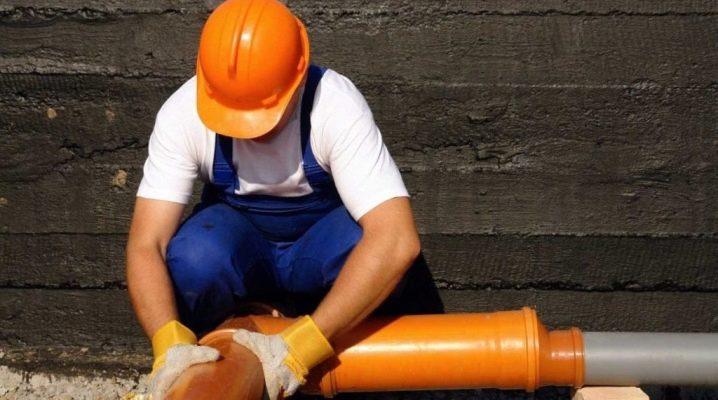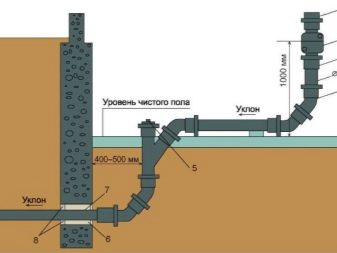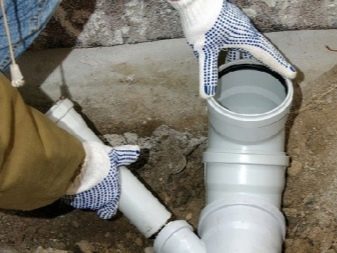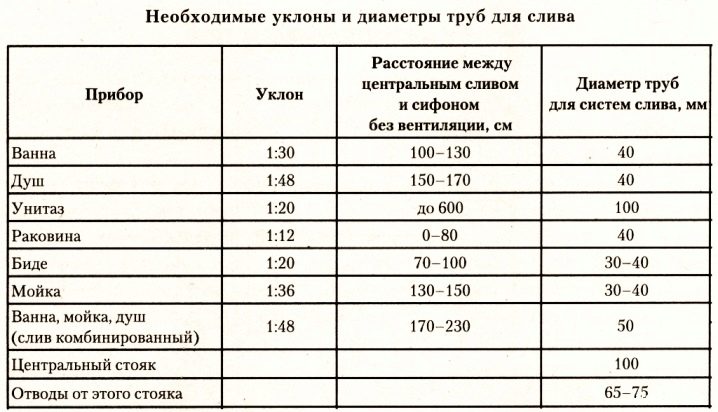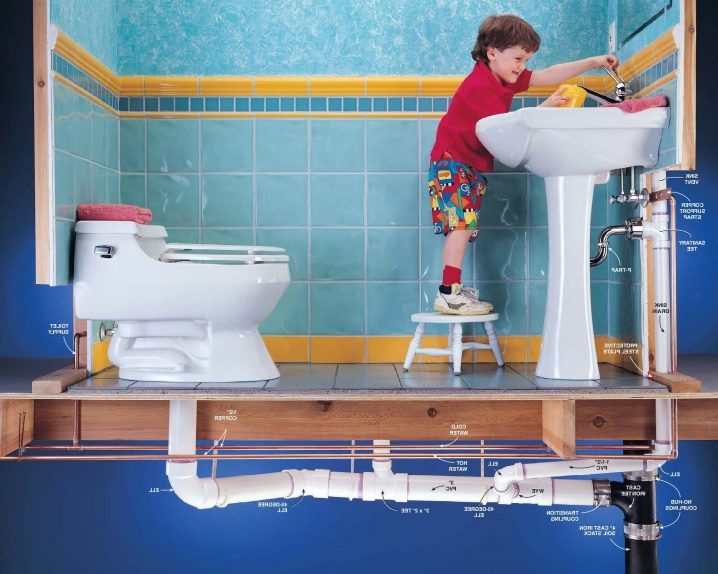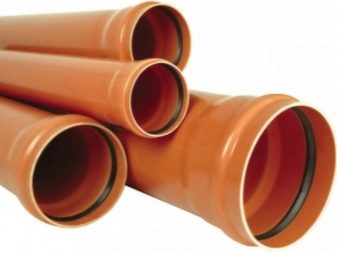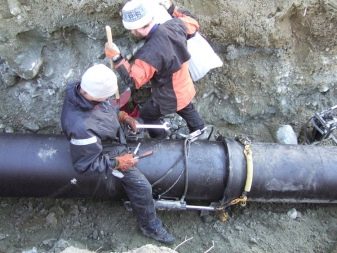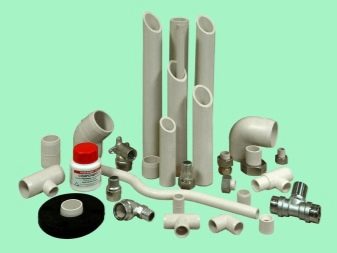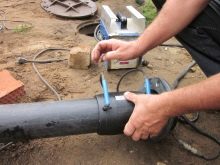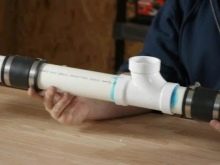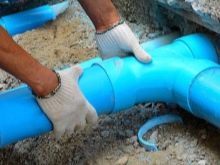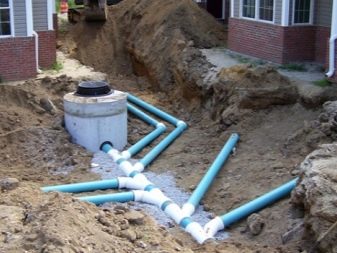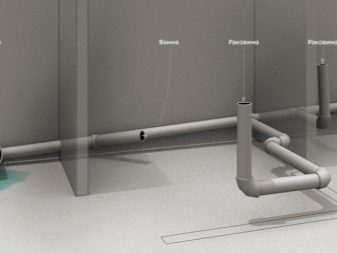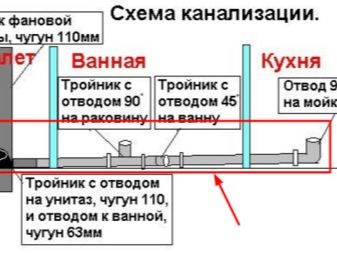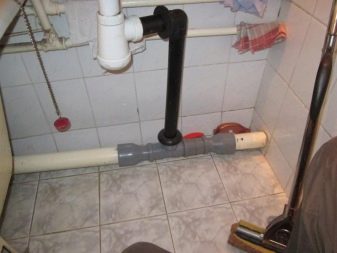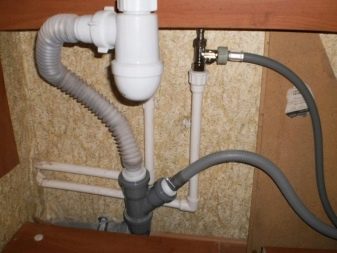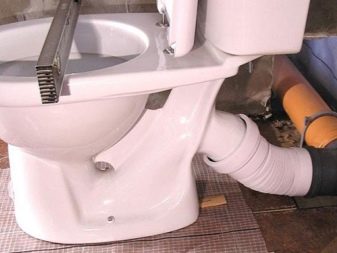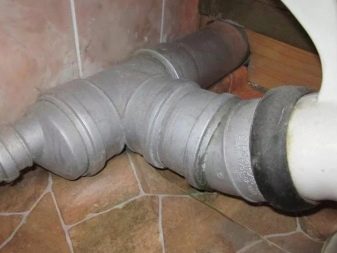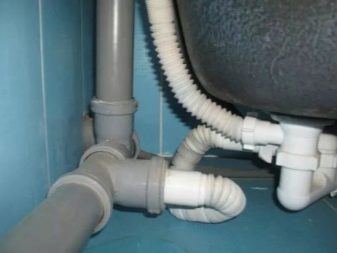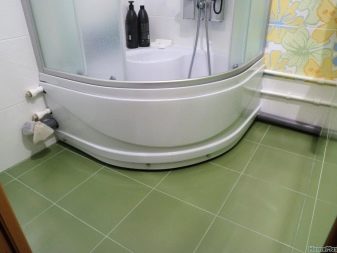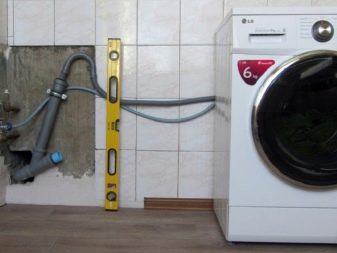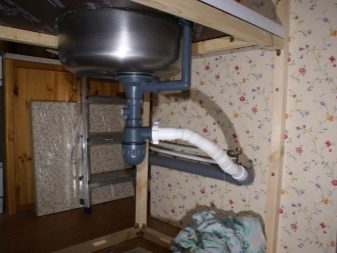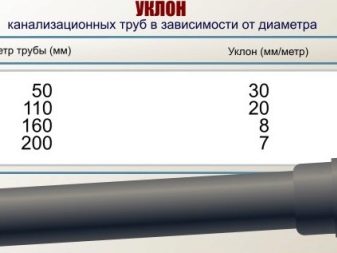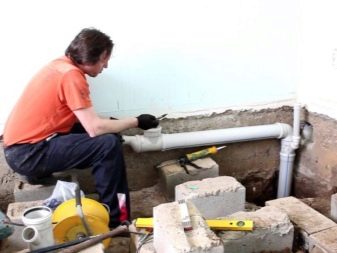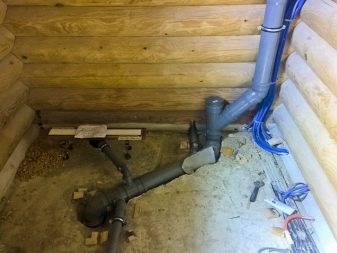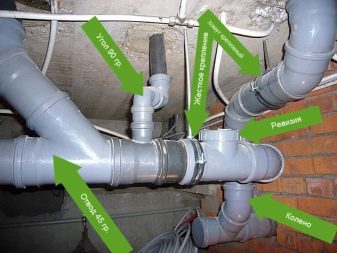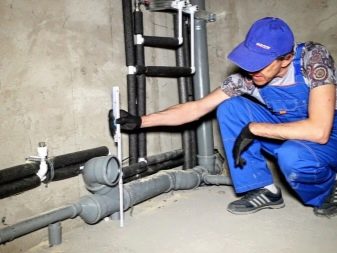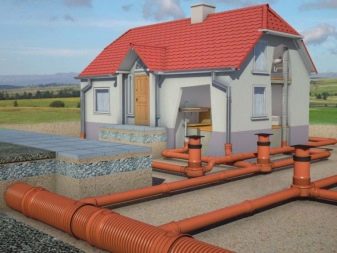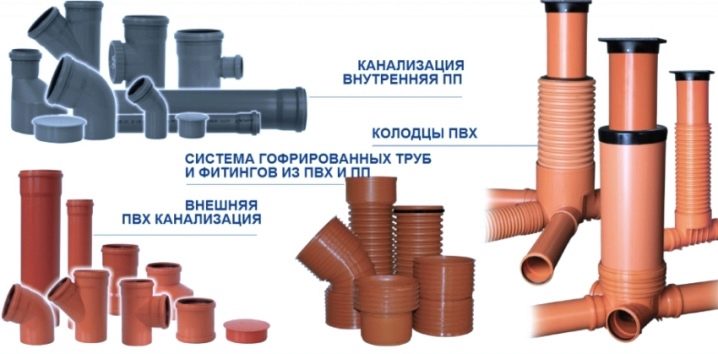How to determine the required diameter of the sewer pipe?
In the process of repairing or building a house, the owner in full growth raises the question of installing a sewer system. This is a complex structure for which you need to find the right materials and elements. One of the most important parameters of the drainage system, on which all performance depends, is the diameter of the pipes used. It is necessary to pick it up in such a way as to ensure the normal functioning of the entire sewage system, but not to overpay for the extra material.
Special features
The diameter of the sewer pipe can be external and internal, since the material itself, from which the product is made, also has a certain thickness. The internal (or conditional) diameter is the distance between the inner walls of the pipe.External - respectively, the distance between the outer walls.
The characteristics of each system product depend on many factors. For example, there are several types of disposal systems, for each of which different pipes are used: stock, drainage, stormwater and others. Depending on the location above the ground level, the sewage system may be internal or external. Depending on the type of sanitary element to which they are attached. Thus, the width of the pipe from the toilet should be greater than that connected to the bathroom, since the first product must simultaneously allow a large flow of water.
Each product must bear a label, the number of which should indicate the internal diameter of the pipe (for example, "DN50" means that its internal diameter is 50 mm). In addition, the diameter itself affects the weight of the pipe and the thickness of its walls. All sizes of products are standardized and spelled out in SNiP.
In addition to the diameter, it is also important to consider the slope of the installed pipes, the method of their connection and the presence of turns at different angles.
What are the?
Most often, when repairing in apartment buildings and small cottages, standard sizes of exhaust pipes are used.For internal networks, a diameter ranging from 50 to 110 mm is selected, and for external highways from 110 to 600 mm. All central pipes and risers are made of 110-mm pipes, as well as the drainage of water from the toilet. Pipes extending from sinks, bathtubs and showers have a diameter of from 32 to 50 mm.
Outdoor sewage systems are most often mounted from wide paths; however, products of 100–110 mm are quite suitable for a small private house. And in multi-unit skyscrapers, pipes with a diameter of 160 mm are most often used for drainage to the central sewage system.
Most often, the sewers are mounted using pipes consisting of cast iron, plastic, HDPE or PVC. Each of these materials has its advantages and disadvantages, as well as the standard dimensions of the inner and outer diameter of the product.
Cast iron
Cast iron products still do not leave their positions in the construction market. Although they are rarely found inside apartments and houses, they are still indispensable for highways of the scale of a district or a whole city. They are produced by casting centrifugal force with the formation of bells. Unlike their predecessors, modern products made of cast iron have a special coating inside for a better glide of water, and outside - for protection against corrosion.
Sealing of joints is increasingly done not with the help of chasing, but with special sealing cuffs and rings.
The advantage of cast iron in comparison with other materials is its strength, resistance to rapid temperature changes and long service life. They are inexpensive and successfully resist destruction under the influence of an aggressive environment, which is not uncommon in sewer systems. The disadvantages are the large weight and cost of a large amount of material, a high risk of growth inside the pipe and their high cost.
Cast iron pipes are available with a diameter of 50 to 300 mm for use in the system of internal and external allotment of apartment and private houses. For large highways serving the entire city, huge cast-iron pipes ranging from 300 to 1200 mm wide are laid.
Plastic
Plastic pipes are a popular alternative to bulky cast iron. They have several advantages, which include ease of installation and resistance to freezing. Like cast iron, plastic is resistant to high temperatures, is immune to the action of ice and allows you to mount systems with high pressure.Compared to metal products, plastic is a budget material.
With all its advantages, the choice of such material will entail some features. Polyvinyl chloride, from which the pipes are made, is very noisy when water flows through it. And if the angle of inclination of the pipe is set incorrectly, then the risk of formation of blockages and hydraulic seal is significantly increased. Besides plastic does not maintain temperature more than 90 degrees.
Pipes with diameters of 32, 50 and 110 mm are usually used for internal sewage systems, and 110 mm for external systems. The connection of the segments to each other occurs both by the method of adhesion of the material, and by using various types of fittings.
It is worth noting that soldering plastic pipes (like PVC pipes) implies professional expensive equipment.
PVC and HDPE
The most popular material for the installation of sewage systems in private homes and high-rise buildings are polymeric pipes made of polyvinyl chloride and low-density polyethylene. Like any material, they have their advantages and disadvantages. The advantages include their low cost, elasticity (flexible pipes can be laid at any angles that do not pinch them), and ease of installation.They are silent and non-toxic, highly resistant to corrosion and last up to 50–60 years.
Unfortunately, HDPE cannot be used to divert water hotter than 45 degrees, and PVC products do not tolerate high temperatures. They are not very resistant to mechanical damage and can change their properties after a long time under direct sunlight.
The minimum dimensions of pipes made of polymeric materials for domestic sewage systems start at 32–40 mm and end at 90–110 mm. For installation of external systems, HDPE pipes are practically not used, and the thickness of PVC products reaches 15 mm. The diameter of the pipes themselves ranges from 200 to 500 mm.
For greater convenience, special tables of standard sizes of sewer pipes made of PVC are used, since this material is used in more than half of the cases. They are used to select pipes in the internal sewage system and these tables look like this.
| Nominal diameter DN, mm | Internal diameter ds min, mm | Wall thickness mm | The length of the socket, mm | Length of free end, mm | |||
e | e2 min | e3 min | A min | C max | L1 min | ||
32 | 32,3 | 1,8 | 1,6 | 1 | 24 | 18 | 42 |
40 | 40,3 | 1,8 | 1,6 | 1 | 26 | 18 | 44 |
50 | 50,3 | 1,8 | 1,6 | 1 | 28 | 18 | 46 |
75 | 75,4 | 1,9 | 1,7 | 1,1 | 33 | 18 | 51 |
110 | 110,4 | 2,7 | 2,4 | 1,5 | 36 | 22 | 58 |
How to choose?
To choose the required diameter of sewer pipe in an apartment or a private house, it is necessary to calculate all the expected drains.Most often, the main pipe leading to the riser is installed with a diameter of 110 mm in order to drain both plain water and impurities freely. And the sizes of the other branch ducts depend on the type of plumbing to which they are attached.
Sink
Shaped parts of any washstand, as a rule, are intended for their combination with pipes with a diameter from 40 to 50 mm. It does not make sense to put larger items, as this would entail unnecessary costs and clutter up free space.
Toilet
The largest pipe used to drain sewage and water from the plumbing elements is a pipe with a diameter of 100 mm, connected to the toilet. With such a width of the product, its length should be minimal, and the location in space should not allow kinks and turns. The faience or ceramic product itself is connected to the outlet by means of a corrugated element, the lower end of which is inserted into the pipe. Corrugation should also not be twisted or have a greater length.
Bath
Although the volume of water leaving the filled bath is several times larger than the similar volume of the toilet bowl, it is sufficient for it to use a discharge pipe with a diameter of 50 mm.This is due to the fact that a small drain hole at the bottom of the bath will not allow a greater width to come out of it. In addition, a small grill is additionally installed on the hole itself, which reduces the water withdrawal rate several times.
The shower cabin can be connected to an even smaller diameter pipe, since such a large amount of water does not drain from it at one time. The diameters of pipes for it can vary from 32 to 50 mm. Most often, a 50-mm pipe is placed, since it is more universal and it can be drained both from the sink and from the washing machine.
Washer
The diameter of the drain hose of almost all models of washing machines is 32 mm, from which follows the minimum size of the discharge pipe. Nevertheless, the installation of a separate outlet pipe for connecting a washing machine is a rare case. Therefore, the hose is connected through a special rubber cuff to the usual 50-mm pipe internal exhaust system.
Kitchen
In the kitchen, one sink can be connected to one pipe, as well as a washing machine and dishwasher. The diameters of their taps are significantly different from each other,therefore, it makes sense to lay one work with a 50-millimeter diameter, and to connect all smaller branches with special cuffs or other fittings.
Payment
In addition to the recommendations described above, you can calculate the diameter of the sewer line using certain formulas. For this, the level of fullness of the collector and the speed of movement of the flow are necessary. In a private house, the average flow rate is about 3 l / s. The calculation is made according to the following formula:
V х (sq. Root from h / c)> k, where h is the maximum liquid level in the reservoir, d is its internal diameter, k is a coefficient depending on the pipe material (for polymers - 0.5, for metal - 0, 6).
Tips
Methods for calculating the sewage system are described in many regulatory documents, however, it is inappropriate to use such complex systems for the selection of pipes in a private house or an ordinary apartment. It is enough to follow one rule: the main pipe should have a diameter of 100 millimeters, and all the pipes coming to it should be 50 mm. Metal pipes should be taken larger diameter than the polymer on the same area.
Due to sediments, the internal passability of cast iron pipes is somewhat reduced. In buildings with five floors and above, the riser is mounted from a pipe with a diameter of not 100, but 150 mm.The horizontal sections of the system should be larger than the horizontal ones.
There are several sewage installation rules that have already been tested for many decades.
- Horizontal installation is carried out only in conjunction with the installation of tees, allowing you to quickly eliminate the resulting blockages. Right angles can be laid only in the joints of the system with the central pipe of the riser.
- In all places of rotation special openings with covers are installed (revisions). They are required everywhere, except for places with fixed tees and near siphons. The sewer riser at the top is better not to jam, as this can lead to an unpleasant odor in the room due to stagnant water and sewage.
- It is advisable to lay all the elements of the system under the slope, whatever the diameter. In order for the slope to provide free flow of content, but not to create unnecessary noise, it is sufficient to lay a slope of 1–2 centimeters per linear meter. At the same time counterrules, as well as different directions of the sockets are unacceptable, all of them must be installed against the fluid flow.
- Metal pipe fittings should be made every 10 x n centimeters, where n is the external diameter of the pipe itself.For plastic pipes, the number of fasteners may be slightly reduced, but this increases the risk of deflection and deformation of the pipe.
- The installation of PVC pipes requires special attention to themselves, since they very strongly react to the temperature of the internal contents. You should not insert them "right next to" each other, you must leave at least 2–3 mm of free space between two parallelly arranged products. In the case of proper installation, expansion of the polymer under the influence of heat will not lead to compression by the elements of each other and the risks of a broken structure.
- It is best to choose pipes and fittings from the same manufacturer to avoid even tiny differences in size. In the presence of a large amount, it is worthwhile to dwell on well-known European brands, however, the domestic manufacturer is increasingly capturing the market every day due to its low price and quality, which is not inferior to global brands.
A wide selection of products of different diameters from different manufacturers allows you to select all the elements for sewage without any particular difficulties. A well-designed and well-made installation of the entire system will ensure its long and efficient operation.
On how to dock pipes of different diameters for sewage, see below.
